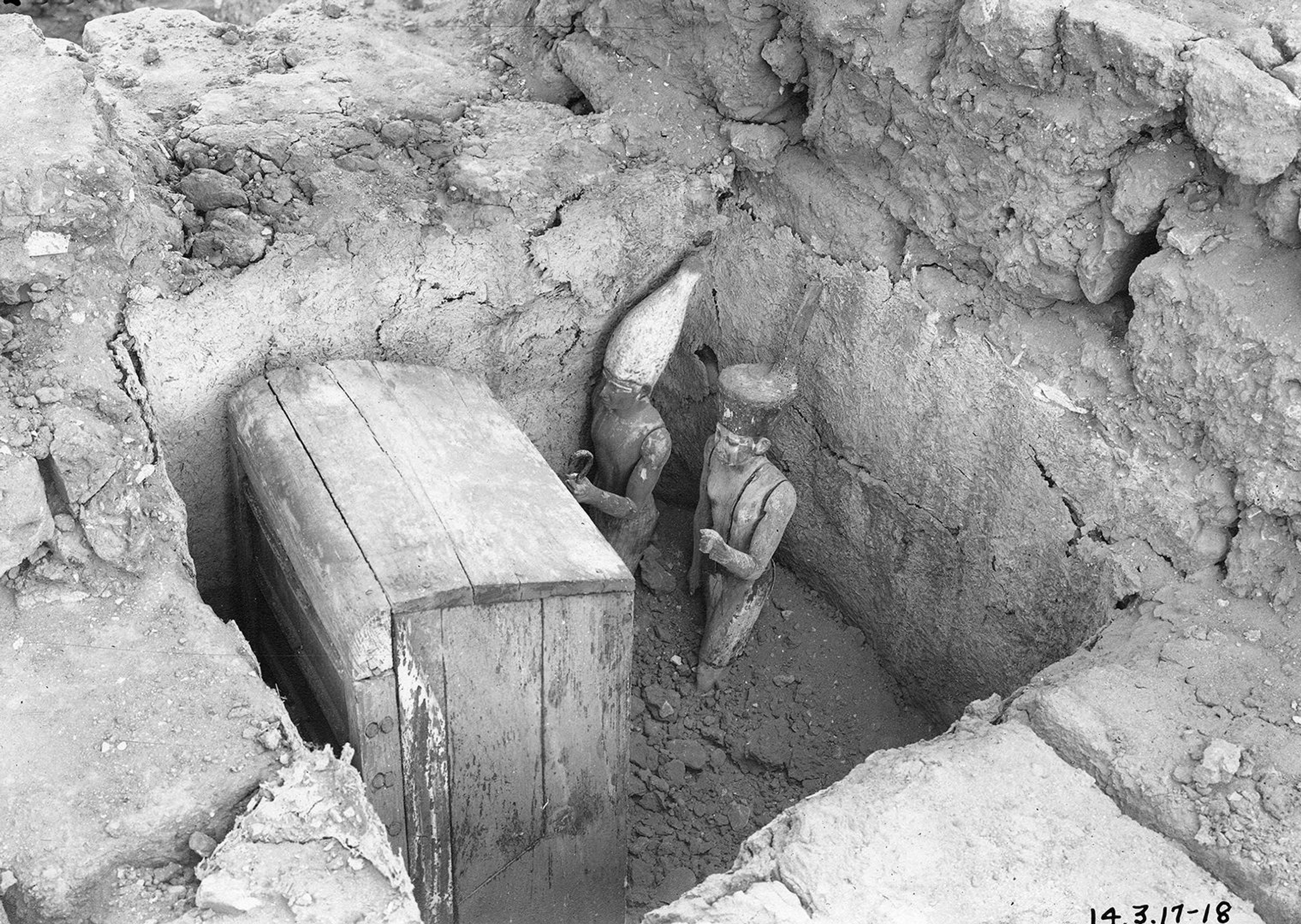
Divine guardian figures and a shrine containing an Anubis fetish. In situ at Lisht South, Tomb of Imhotep, chamber inside the south enclosure wall, MMA excavations, 1913–14. The Metropolitan Museum of Art, Department of Egyptian Art Archives (L13-14 1317)
More than half of The Met’s Egyptian collection comes from its own excavations. These were made possible by the Museum’s Trustees, who, on October 15, 1906, established the Department of Egyptian Art and announced the organization of an Egyptian Expedition to conduct excavations in Egypt.
As director of the Expedition and curator of the newly created department, the Trustees appointed Albert M. Lythgoe, who had been the first curator of Egyptian art at the Museum of Fine Arts, Boston and a lecturer at Harvard University. Lythgoe had extensive experience excavating in Egypt and had presented to the Trustees a carefully thought-out plan for building a comprehensive, world-class collection of ancient Egyptian art through excavation.
For some time, the Egyptian government had been granting excavation concessions to foreigners and generously sharing the archaeological finds with excavators in a system known as partage. At the end of each excavation season, there was a division of finds, with the Egyptian Antiquities Service making the final choice.
In January 1907, Lythgoe began work in the cemeteries at Lisht, a site about thirty miles south of Cairo that is famous for the Middle Kingdom pyramids of Amenemhat I and his son Senwosret I (about 1980–1915 B.C.). Lisht served as the necropolis of the Middle Kingdom capital, Itj-tawy, and included tombs of important officials. Lythgoe's co-director was British Egyptologist Arthur C. Mace, and they were assisted by Herbert E. Winlock, who had just graduated from Harvard and was on his first expedition to Egypt. Winlock later succeeded Lythgoe as head of the Department of Egyptian Art, and eventually became director of the Museum.
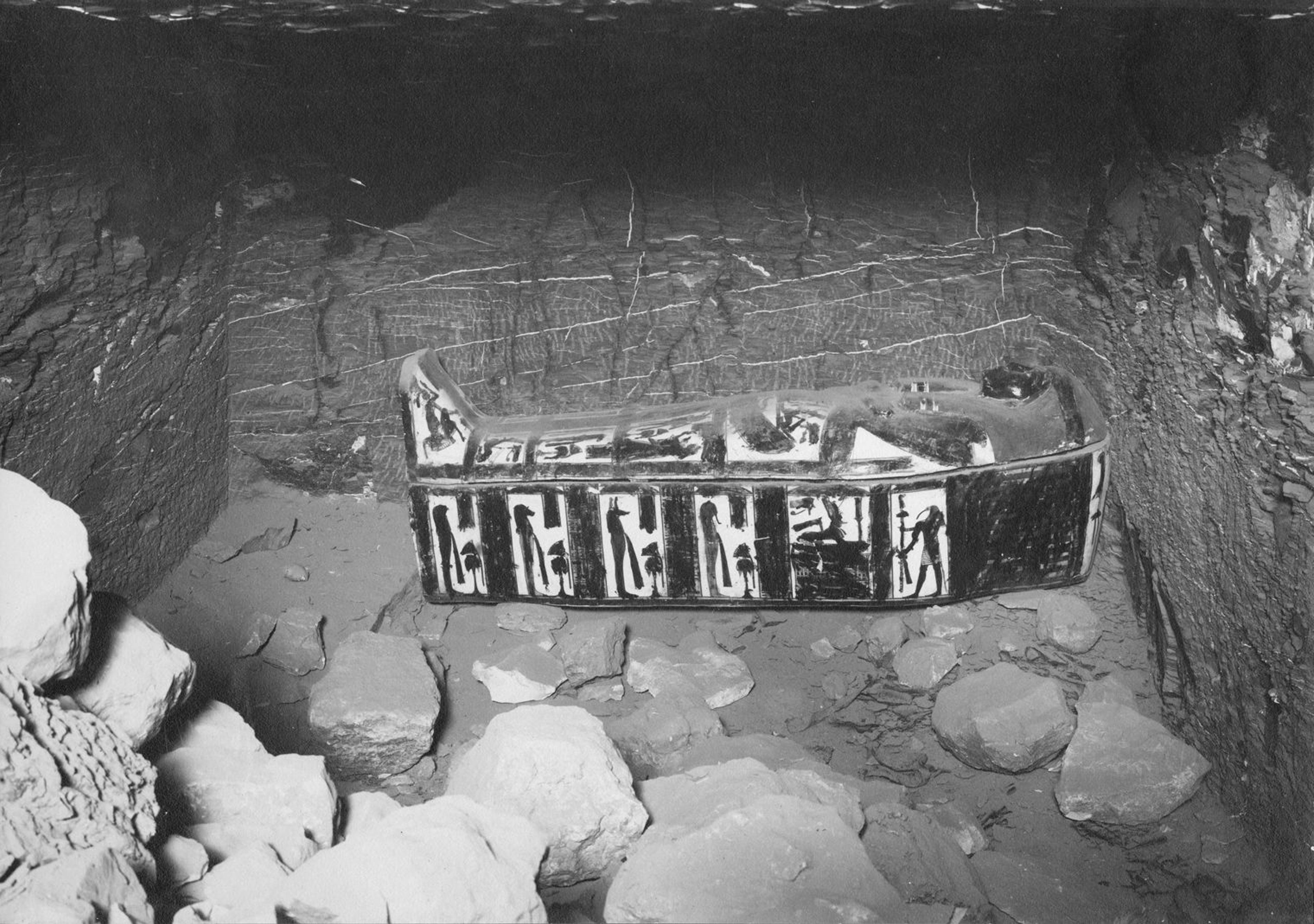
The nested coffins of the Singer of Amun-Re, Henettawy, as discovered in her burial chamber at Thebes, in Tomb MMA 59, MMA excavations 1923–24. Photograph by Harry Burton. The Metropolitan Museum of Art, Department of Egyptian Art Archives (M5C 148)
In 1908, the Egyptian Antiquities Service granted Lythgoe a second concession. This was for an area in Kharga Oasis with remains dating from Dynasty 27 (about 500 B.C.) to early Christian times. Two years later, in 1910, a separate branch of the Egyptian Expedition was established to study the Coptic monasteries of the Wadi Natrun in the eastern Delta. This work was carried out by architect William J. Jones (later Palmer-Jones) in cooperation with the Comité de conservation des monuments de l’art arabe in Cairo.
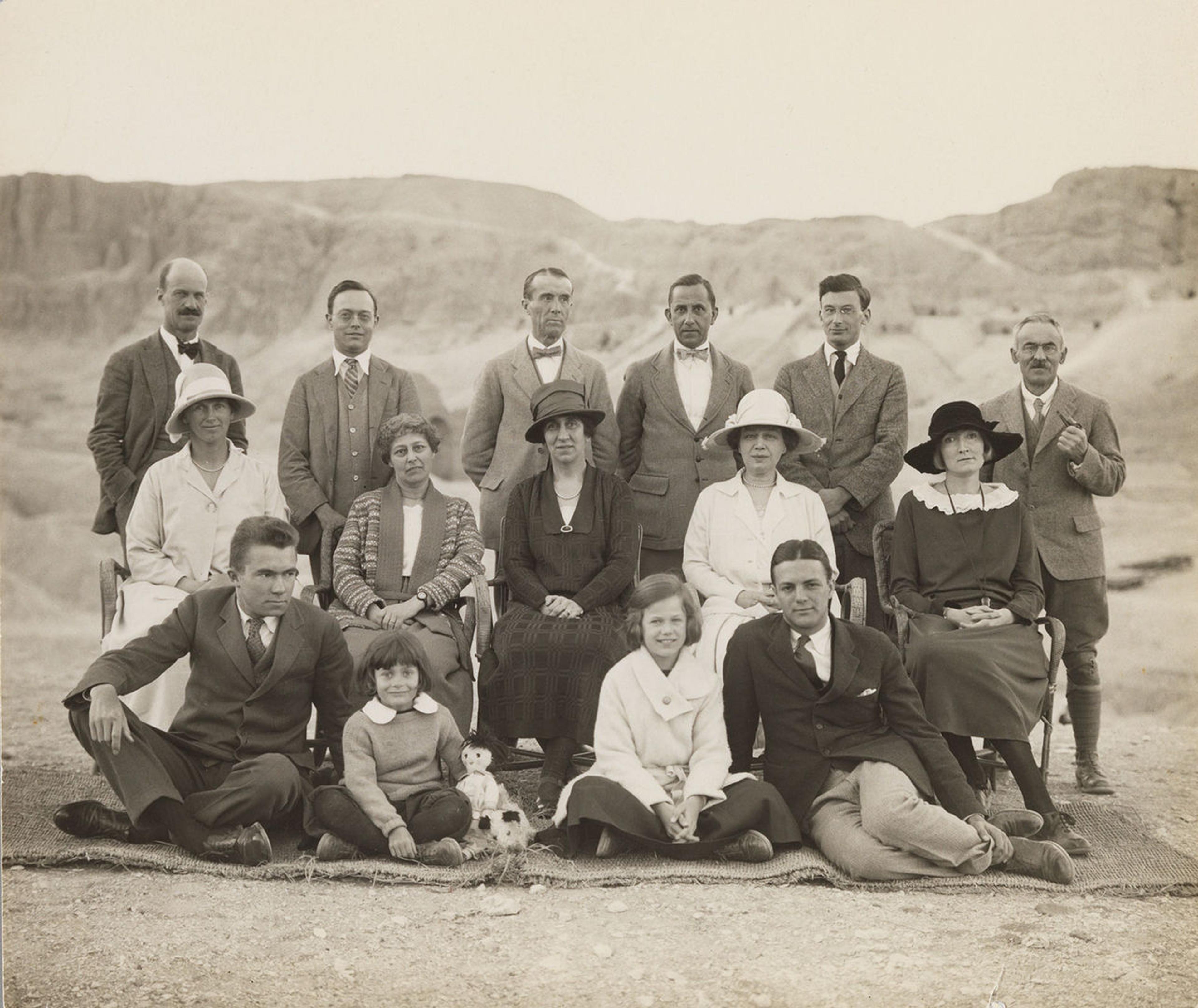
Members of the Metropolitan Museum Egyptian Expedition, January 19, 1925: (back row, left to right) Herbert E. Winlock, Walter Hauser, Albert M. Lythgoe, Harry Burton, Charles K. Wilkinson, Norman de Garis Davies; (center row, left to right) Helen Winlock, Nina de Garis Davies, Lucy Lythgoe, Minnie Burton, Miss Willis; (front row, left to right) Walter Cline, Barbara Winlock, Frances Winlock, G. M. Peek. Photograph by Harry Burton. The Metropolitan Museum of Art, Department of Egyptian Art Archives (MM83565)
In the same year, a third excavation concession was granted in western Thebes, across the Nile from the modern city of Luxor. The ancient city of Thebes was a great religious center, sacred primarily to the god Amun. One of the richest archaeological sites in the world, this vast area, covering a period of more than two millennia, is best known for the great temple complexes on the east bank, and for the royal and non-royal cemeteries and royal mortuary temples on the west. For twenty-six years, the Museum excavated numerous monuments including: the temple of Mentuhotep II of Dynasty 11, founder of the Middle Kingdom (about 2000 B.C.); non-royal tombs of Dynasties 11 and 12, including that of the Chancellor Meketre (about 1975 B.C.); the temple of the female pharaoh Hatshepsut (about 1475 B.C.) and the festival city of King Amenhotep III (about 1350 B.C.), both of Dynasty 18 in the New Kingdom; tombs of Dynasties 21–26 (about 1000–525 B.C.); and monasteries of the Early Christian (Byzantine) Period (A.D. 330–641/42).
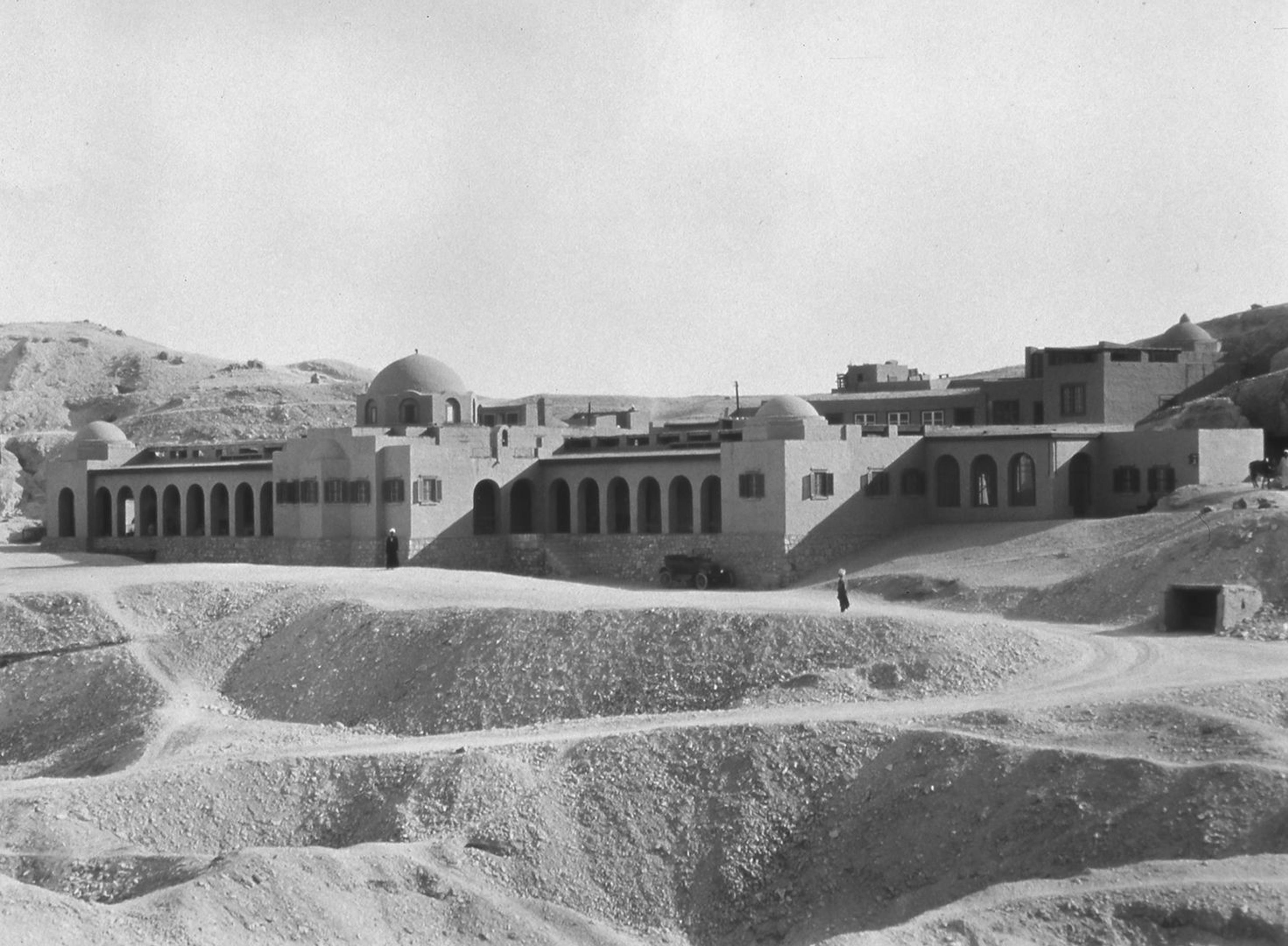
Metropolitan House, Home of the Egyptian Expedition at Qurna in Western Thebes. Built in 1912. The Metropolitan Museum of Art, Department of Egyptian Art Archives (DSvh016437)
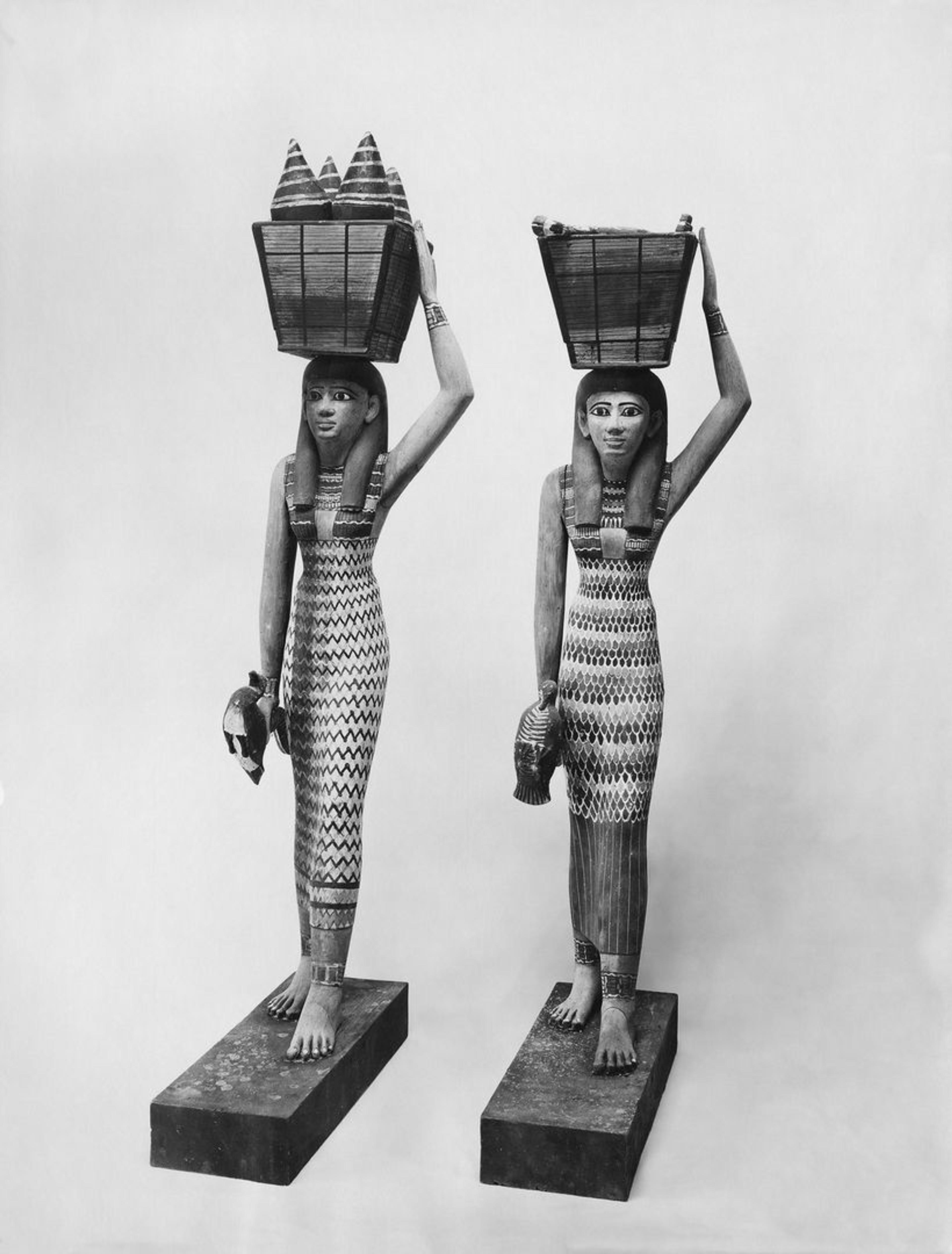
Estate figures. From Thebes, Tomb of Meketre (TT 280, MMA 1101), MMA excavations, 1920. Photograph by Harry Burton. The Metropolitan Museum of Art, Department of Egyptian Art Archives (MC 86)
From the outset, a significant aim of the Egyptian Expedition was to make as complete a record as possible of the ancient monuments, especially the decorated tombs of the Theban necropolis. To this end, a Graphic Section of the Expedition was established in 1907 under the direction of British Egyptologist Norman de Garis Davies. During the next thirty years Davies, his wife, Nina, and a group of young artists painted more than 350 facsimile copies of ancient wall paintings. In 1914, photographer Harry Burton joined the staff of the Expedition. Burton’s photographs provide a complete record of dozens of Theban tombs and temples, and an invaluable record of the ongoing excavations. In 1922, the services of both Burton and Mace (from Lisht) were donated to Howard Carter to assist with the clearance and documentation of Tutankhamun's tomb and its contents.
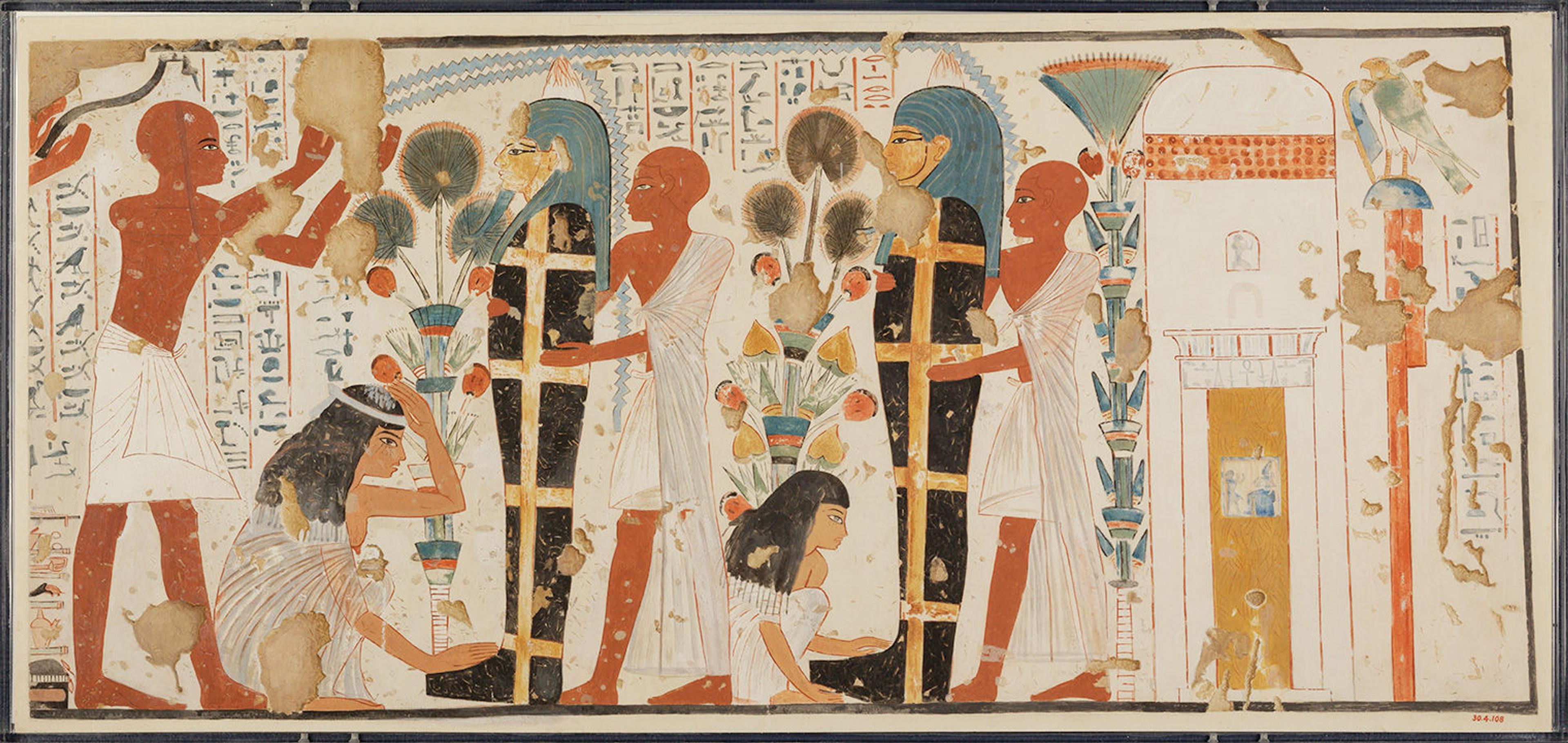
Purifying and Mourning the Dead. Original: New Kingdom, Dynasty 18, reigns of Amenhotep III-Akhenaten (ca. 1390–1349 B.C.). Thebes, Tomb of Nebamun and Ipuky (TT 181). Facsimile painted by Charles K. Wilkinson for the Egyptian Expedition Graphic Section (ca. 1930). The Metropolitan Museum of Art, New York. Rogers Fund, 1930 (30.4.10)
In its final years, the Egyptian Expedition was granted a concession to excavate at Hierakonpolis, about sixty miles south of Thebes. Known for its early cemeteries and Dynasty 2 enclosure, this site is important for insights it provides into the emergence of ancient Egyptian culture in the Predynastic (about 4000–3100 B.C.) and Early Dynastic (about 3100–2700 B.C.) Periods.